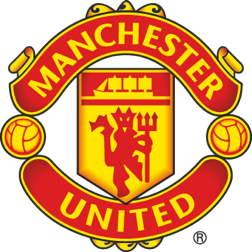True colours? Myth-busting our first kits
We’re the Red Army; the colour of our shirts as recognisable as the crest and more famous than the devil. But before we were Manchester United, before J. H. Davies saved the club, the colour of our kits was by no means settled.
Our early shirts remain something of a mystery, still shrouded in folklore and urban legend. However, what we do know tells us about the heritage of the club, and the finances of Newton Heath (L&YR).
The earliest mention we’ve found of the Heathens’ colours is from The Sportsman’s Yearbook published in 1879. In it, Newton Heath (L&YR) are registered as wearing “white with a blue cord”. A plain white shirt would have been cheap and easily available, two necessities for a team made up of working-class men employed at the railway’s wagon works.
After 1881, the next mention we have of Newton Heath’s chosen colours is the 1887/88 season, where the Manchester & District FA Yearbook noted that the club has registered red and white halved shirts. Newspaper references to Newton Heath’s “familiar red and white costumes” (Athletic News, 1889) continued into the early 1890s, with white shirts occasionally worn as a change kit as per league rules. The club seemed to have a little more money around this time, and according to one advertisement, had begun to work with a sports outfitter in Nottingham called W. H. Hill who sourced their kits.
It’s the black and white images of players wearing these halved shirts that have led to the idea, reinforced by 1992/93’s away kit, that Newton Heath wore green and gold halves during their early years. However, we have never found evidence to support this design.




